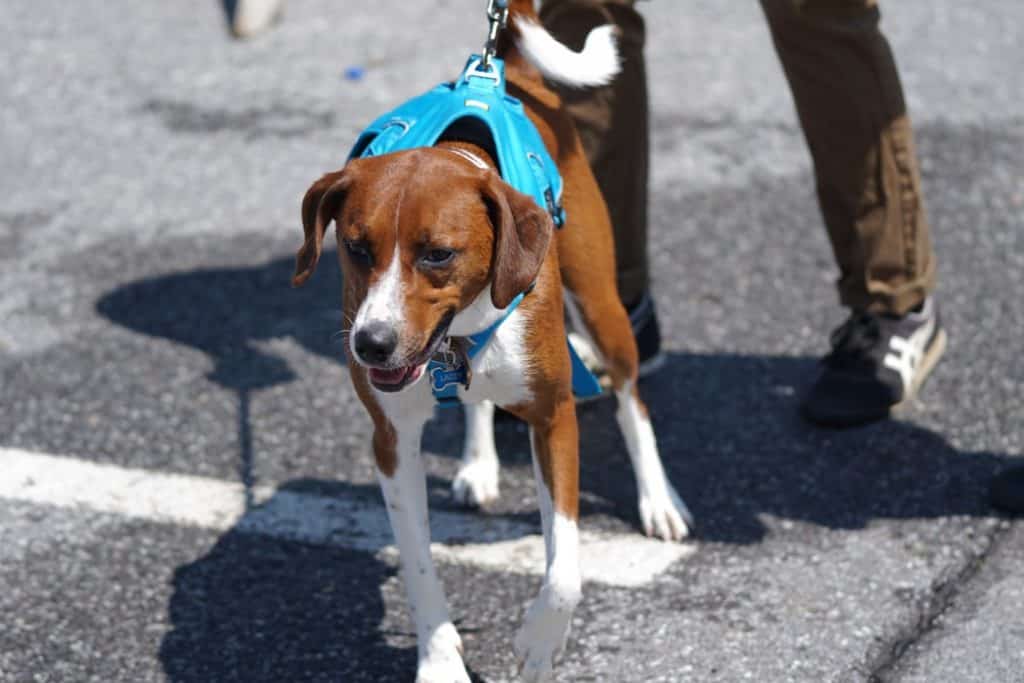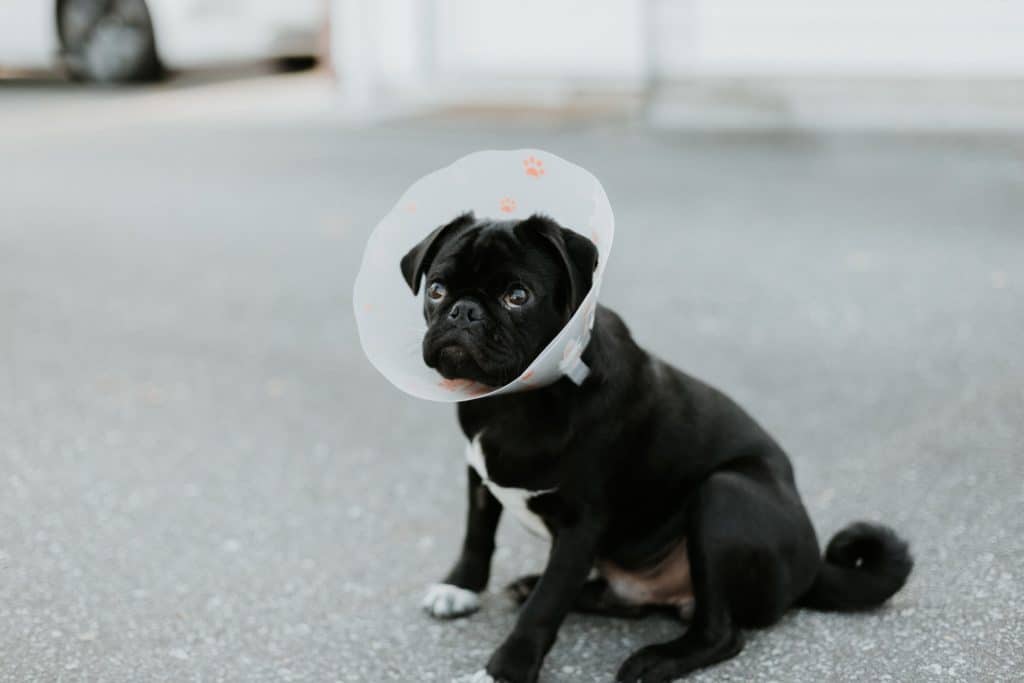As our pet recovers from a castration procedure, we may be wondering: how soon can I walk my dog after neutering? How far can I walk my pet after the surgery? Certain things can influence our dog’s recovery, which determines when we can return to our daily walks.
Contents
How Soon Can I Walk My Dog After Neutering?
There’s no one-size-fits-all answer to this question. Although some dogs can go to walks three days after the surgery, others may need more time to heal. However, it would be best to let the dog fully rest for 10 to 14 days until you can resume your dog’s normal walking routine.

Recommended Timeline for Dog Walking After Neutering
Dogs that recover immediately can do light walks indoors within the first week. Even so, there’s still a chance for pets to cause self-inflicted trauma to the surgical site by licking or scratching the sutures. Sometimes, even low-impact movements may cause stitches to open.
This timeline shows how we can slowly walk our dogs within the first weeks after the neutering surgery. It offers a better understanding of what the dog is going through so that we can take good care of our pets until they regain strength for routine walks.
- First 24 Hours: The dog will be most uncomfortable during the first day after the surgery. It may feel drowsy due to the anesthesia and stitches, so it would be unwise to force the dog to take walks at this stage. Besides, the dog won’t have the energy to move, as it most likely would want to rest.
- Two Days After: I generally recommend that dogs take complete rest up to 48 hours after the surgery. While some dogs may regain strength at this point, there’s still a risk of infection due to the fresh stretches. If your pet exerts too much effort in walking, you also risk the chance of the incision to open and cause bleeding.
- Day 3: I usually schedule a post-surgery checkup 3 days after neutering. While the incision may be healing nicely at this stage, we still have to monitor your pet’s health and stitches. Depending on your dog’s energy, we may try reintroducing short walks inside your home.
- Day 10: During the 10-day period, make sure to avoid leaving your dogs alone and put them on light exercises in a controlled area. You can also start walking for short distances, although you have to be careful about over-exertion. Depending on your neutered dog’s recovery, we can give the all-clear to continue routine walks.
Risks of Walking Your Dog Too Early
Neutered male dogs live 18% longer than uncastrated ones. Part of that benefit is knowing how to care for your pet to avoid post-surgery complications. For this reason, it’s crucial that we understand the risks associated with walking neutered dogs right away.
If your neutered dog strains itself from walking, it may suffer from increased swelling, which would delay the recovery process. Consequently, we risk opening the wound, resulting in your pet getting replacement stitches.
Just like female dogs and spaying, male dogs are at high risk of infection after the neutering surgery, which means insisting on going outside exposes the body to plenty of bacteria. Similar to female dogs, your dog may experience fatigue easily, causing its muscles to break down. All of these can increase body pain, preventing your dog from recovering properly.
How to Help Your Dog Regain Strength for Walking
Neutering is an invasive surgical procedure for dogs, so we need to provide the best care for your pet so it can go back to normal. Take note of these tips to ensure you can take your dog on short walks right away.
Walk or Play Inside the House
While it may not feel the same as walking on the beach or exercise at the park, walking inside your home while you keep your dog inside the house should stimulate your dog’s energy to move again.
Neutered dogs tend to have a roughly 8% increase in excitability, so you need to keep your pet calm and prevent it from becoming hyperactive while they exercise. Besides, the healing process will be a lot faster if you limit your pet’s exercise. Hence, make sure to play or walk in confined yet relaxing spaces.
Follow the Vet’s Prescribed Medication
Neutered dogs need to take pain medication and antibiotics to prevent infection and relieve post-op discomfort. Meanwhile, some pets may require low-grade sedatives or anti-anxiety medication.
Check and Clean Stitches
Male dogs would have an incision in the scrotum, and it’s important that you keep the suture area clean. Make sure you cover the stitches when heading out or doing light movements.
Use a damp towel to wipe oozing pus, crusts, or dirt. Also, stop your dog from licking or chewing the stitches. If you notice swelling, unpleasant discharges, or continuous dripping of blood or other fluids, bring your pet back to the clinic.
Related Questions
How Far Can I Walk My Neutered Dog?
There is no exact answer to this, as dogs require varying exercise levels. If your dog fully recuperates after 10 days to 14 days, you should be able to walk it as far as you typically would. Some breeds need a minimal workout, while others want high-intensity activities.
How Can I Get My Dog to Walk Again After Neutering?
Start with slow leash walks and work your way towards longer walks each day. If your dog doesn’t show any discomfort, then take him on a slightly longer walk without a leash next time. If he shows signs of tiredness, let him rest and try slow leash walks again.
What If My Dog is Too Active?
It may be frustrating for high-energy dogs to go without regular walks. If they seem eager to go back to walking, and it still isn’t the right time, provide mental stimulation games to divert your dog’s attention. Use chew or puzzle toys to keep your pet occupied.
Conclusion
All dogs are different, so your decision to walk your pet should depend on its recovery and health status. Whether it’s as early as three days or longer, it’s essential that you follow the proper aftercare instruction. In this way, your dog can heal faster and enjoy long walks again.

